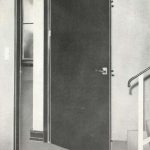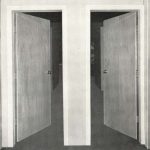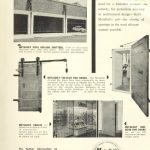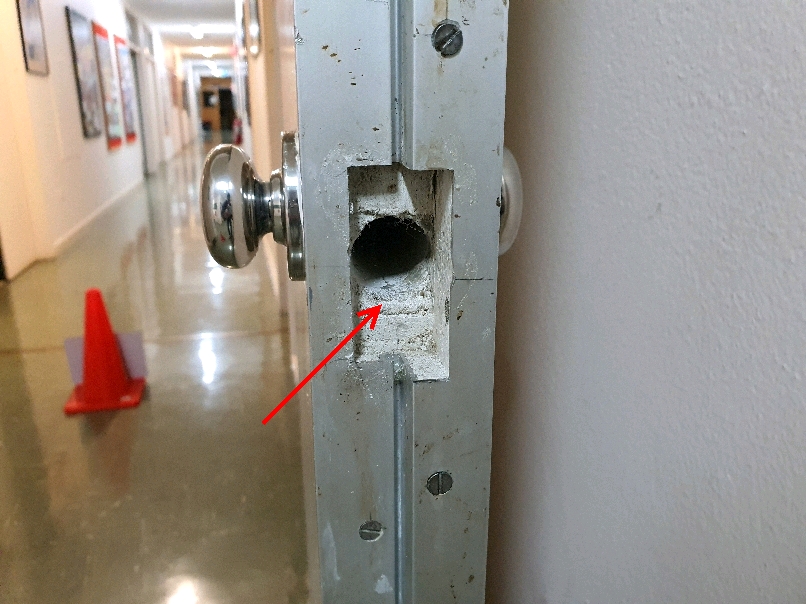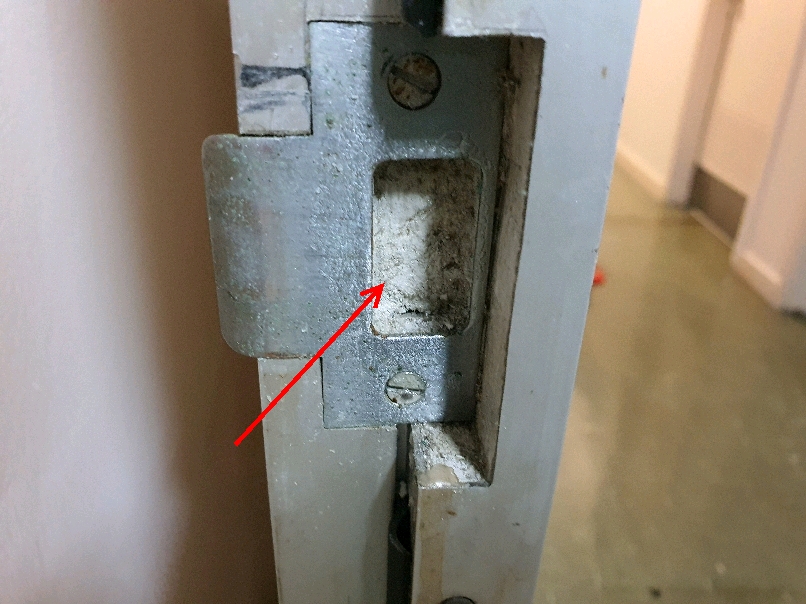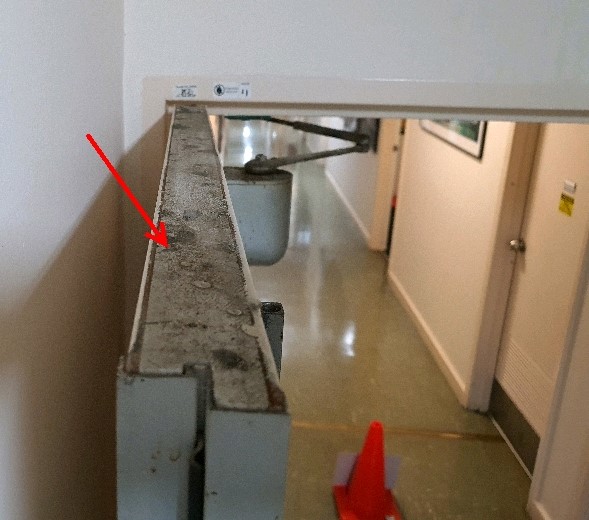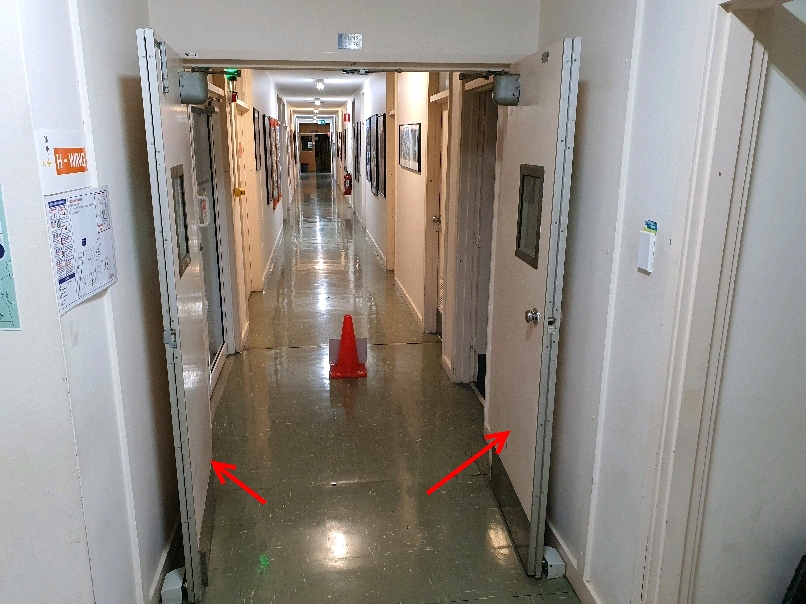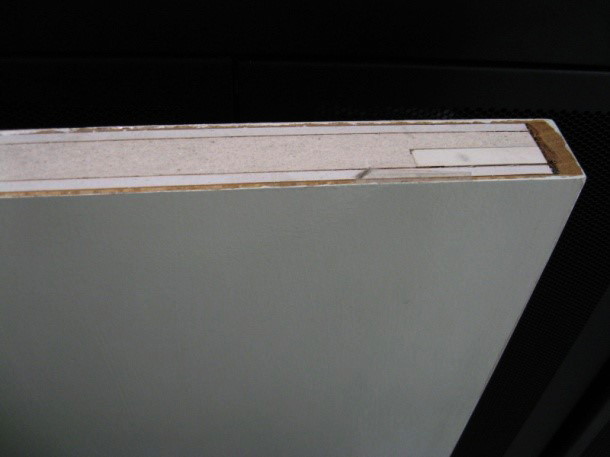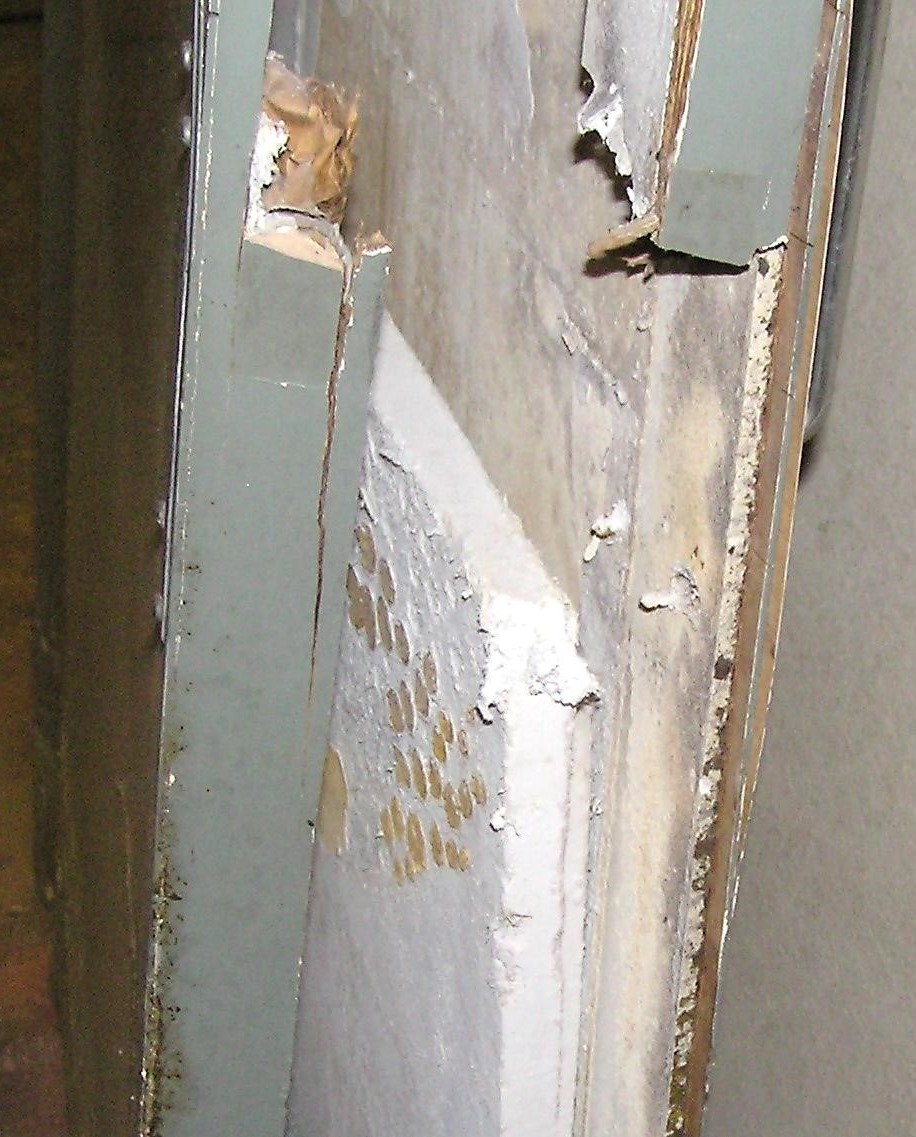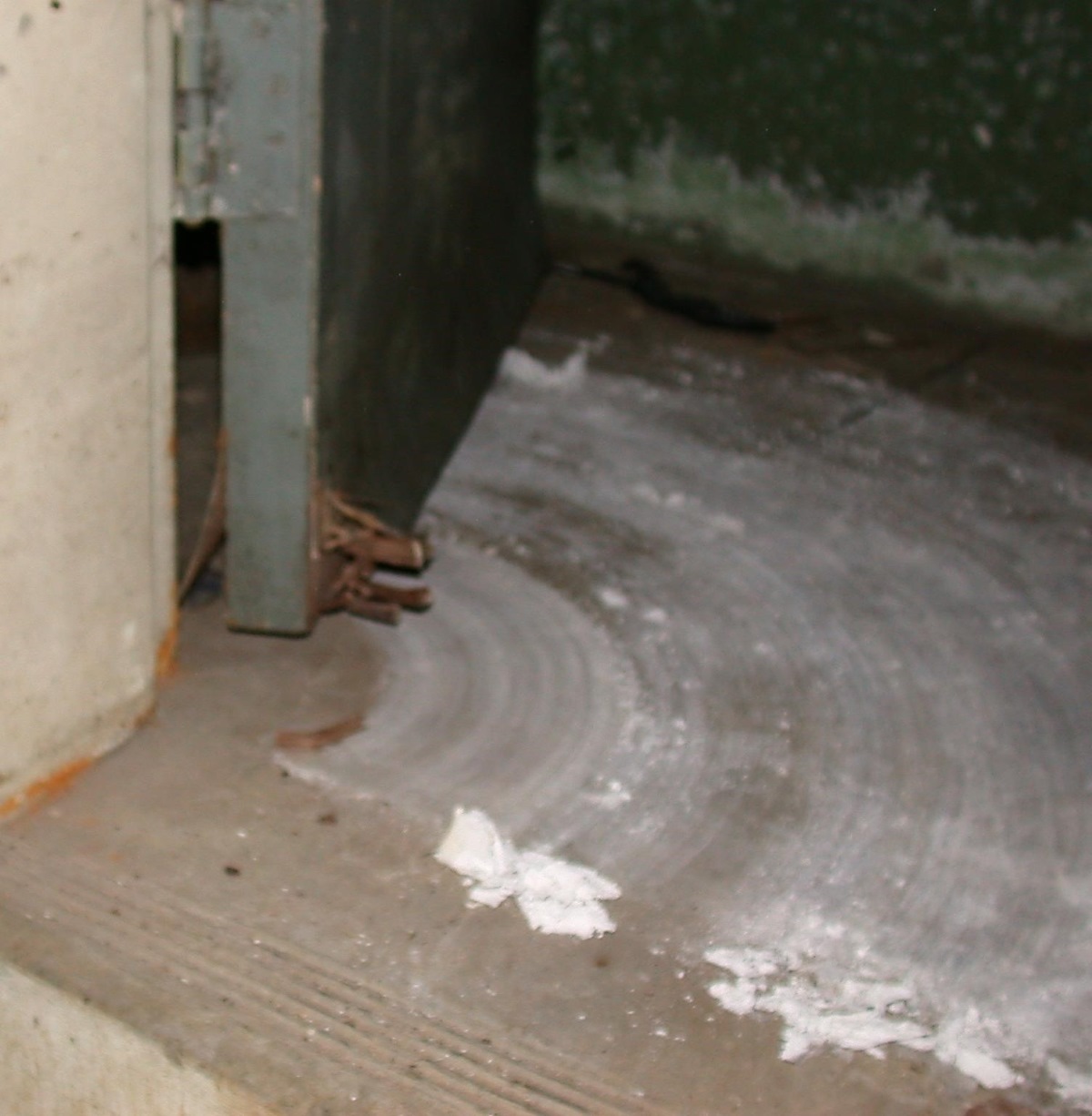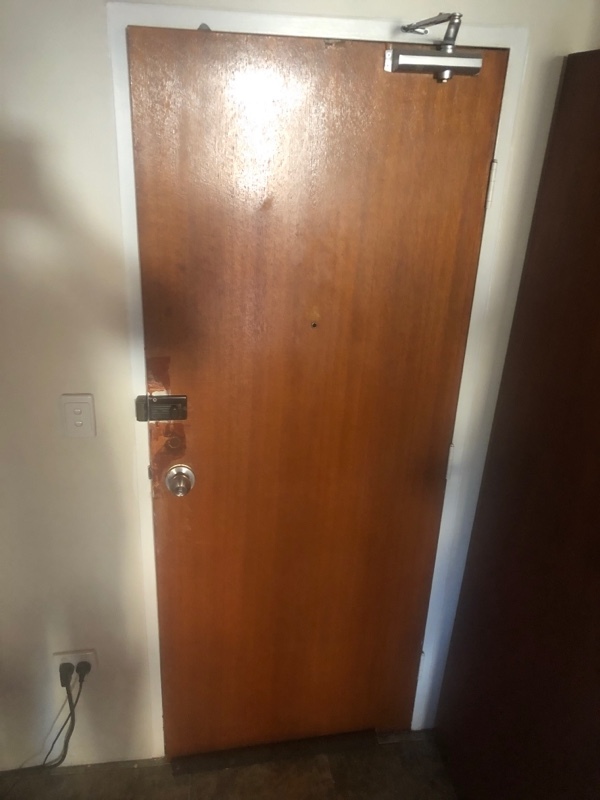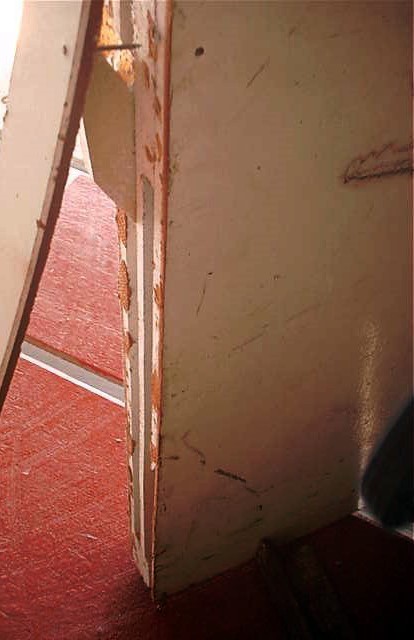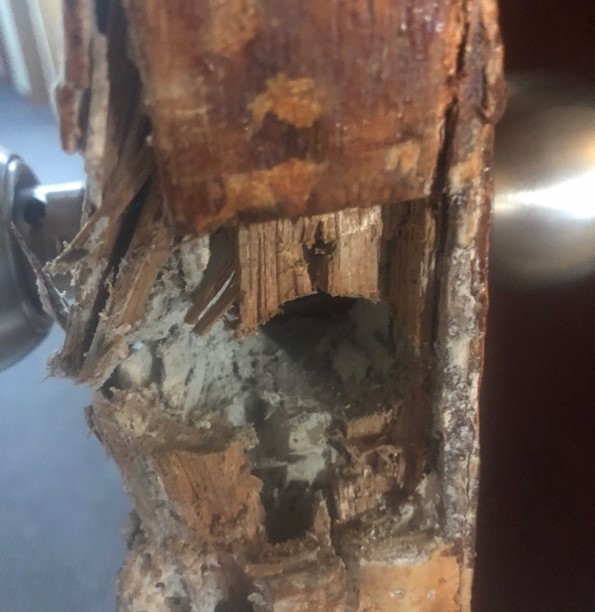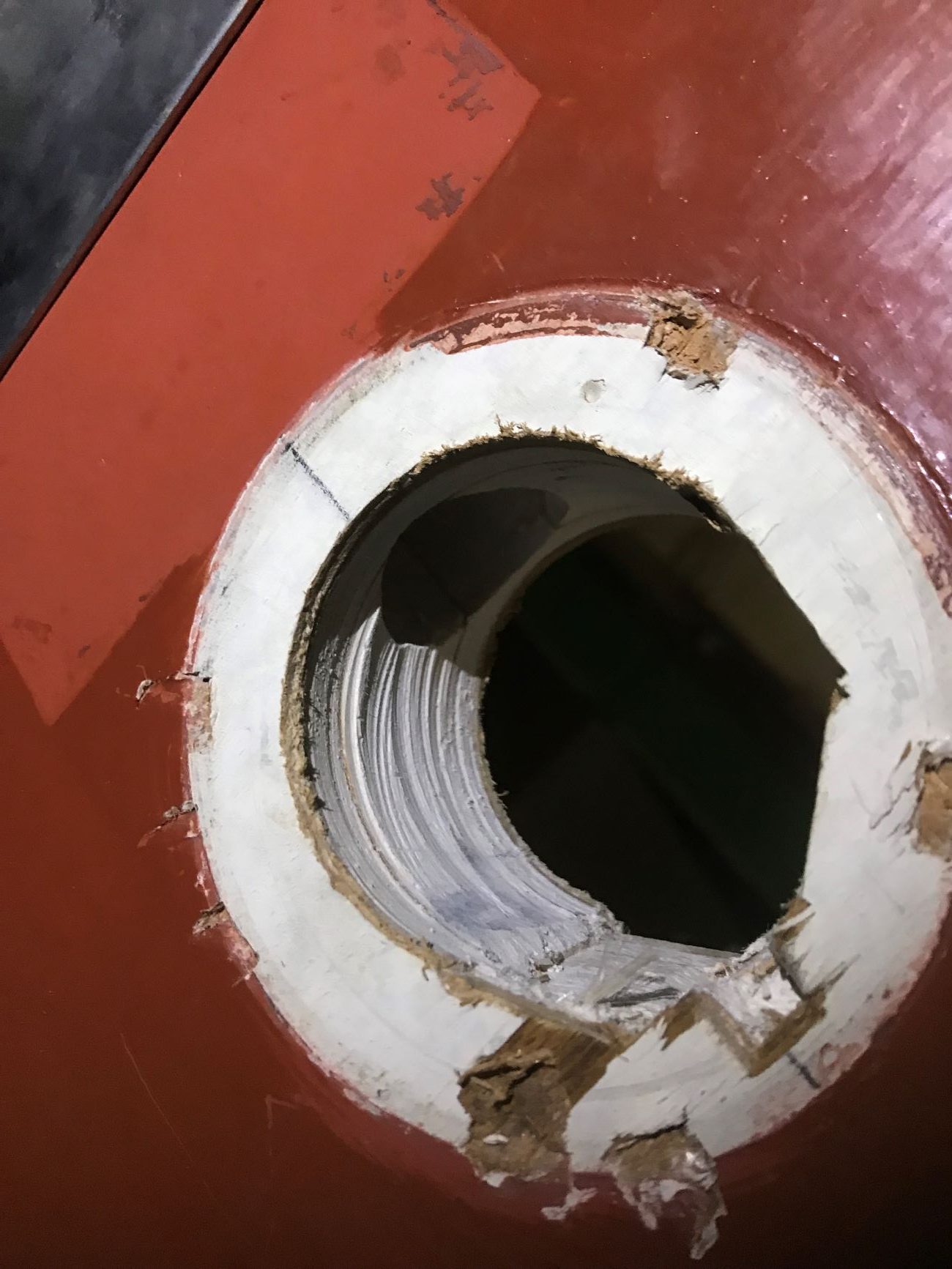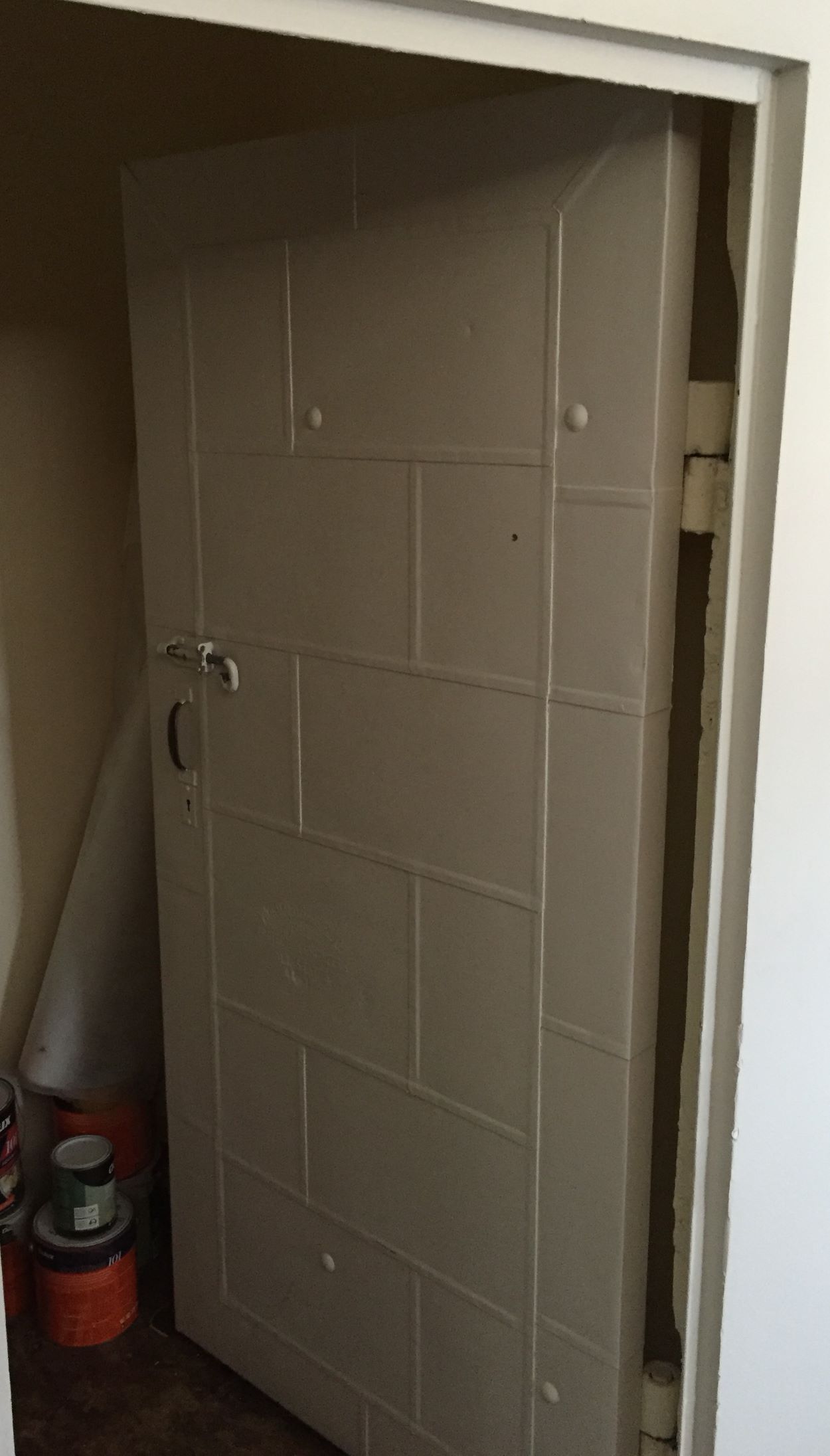Home / Building structures & components / Fire Protection / Asbestos (core) in fire doors
Asbestos (core) in fire doors
Description
Doors with core of compressed, often friable, asbestos to enable fire resistance. May also contain LDB set in as core.
Doors may be steel or timber faced. Steel architraves may also indicate a fire door construction.
The core of a fire door may be exposed at the top, bottom and around mechanisms.
Hardie’s fire doors were constructed with K-Lite insulation (up to 1971), which was a low density, hydrous calcium silicate and 10-15% amosite asbestos mix.
Some fire doors (single and paired) are installed with a fire panel over the top. The door frame may extend to the ceiling height with a fixed or removable transom between the door and the panel. The fire panel will often contain fire resistant material, whether identical to the fire door leaf, or in older panels also have an identical asbestos core to that of the door.
Fire doors will often be tagged with the manufacturer name and the date or year of installation. The fire panel may not necessarily be tagged.
See Durasteel information page.
Today calcium silicate is still one filling material used for fire door cores, without asbestos. Processed vermiculite is often used as a fire-retardant raw material in composite panelling within fire-rated door construction.
Brands/products
- K-Lite
- F.R. Board
- Metalbilt (Wormald Bros)
Years of production/use
Prior to mid-1980s
Residential uses
- Apartment blocks
Industrial uses
- All commercial and office buildings, factories, multi-storey industrial sites, access to plant rooms, warehouses etc
- Government and community buildings
Be aware
Older fire doors with asbestos may be difficult to identify. Modern fire doors are labelled as asbestos-free. Fire doors of an age without labels should be treated as containing asbestos.
Damaged top and bottom edges may result in abrasive leak of core into site, particularly if door does not have free movement.
Older fire doors may have been replaced in stair wells on occupied floors but those fitted to plant or lift motor rooms may have been left in-situ.
Dismantling door locks without prior structural knowledge may impact the fire door integrity and lead to exposure.
Core may consist of ACM and non-ACM material combination. Some doors have non-ACM infill panels to strengthen the housing of the locking mechanism.
